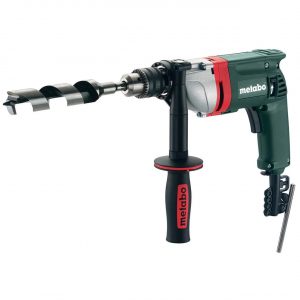Drills are implements used for planting small grains and seeds. These implements have tubes that drop seeds into narrow individual furrows. Their name derives from the streams of seed they produce. Drills come in various sizes ranging from one-horse to four-horse models, and some can plant up to twelve feet in one pass. They were first used in China around 1600 but were introduced to the U.S. as early as 1840. They have a long history and are one of agriculture’s most widely used tools.
 To prevent accidental engagement, drills should be handled with caution. While holding a drill connected to a power source, hold it by the body of the tool rather than the trigger or chuck. Holding it this way will prevent accidental engagement. Also, remember to secure any loose materials with electrical tape or chalk so you won’t accidentally hit any dangerous materials while drilling. You should always take a safety test before using any tool. With these tips, you’ll find the best way to test a drill in your home.
To prevent accidental engagement, drills should be handled with caution. While holding a drill connected to a power source, hold it by the body of the tool rather than the trigger or chuck. Holding it this way will prevent accidental engagement. Also, remember to secure any loose materials with electrical tape or chalk so you won’t accidentally hit any dangerous materials while drilling. You should always take a safety test before using any tool. With these tips, you’ll find the best way to test a drill in your home.
Variable speed control is essential for drilling in wood and other materials. A drill that features a two-speed switch and variable speed is ideal for heavy-duty drilling. Drills may also include a wire brush or mounted points for grinding. The speed of the drill is crucial since a drill should be able to start a hole at a lower speed than one that is too fast for a screwdriver. Using lower speed for larger-diameter bits will prevent the bit from overheating due to friction.
Another key benefit of Tool Kit Depot drills is their flexibility. While the screwdriver is useful for basic household tasks, a drill is essential for more challenging tasks. It is easy to use a drill to assemble knock-down furniture or baby gates. It is also useful for masonry work. Drills also allow for drilling into more dense materials, such as concrete. Most tool makers offer corded and variable-speed models, but most are available as battery-powered models as well. A battery-powered drill will be more convenient and light to carry.
One other advantage of an 18-volt drill is its portability. With a range of accessories available on the Milwaukee M18 platform, a drill can be used for various tasks. These tools are compact and lightweight but require more batteries and will be heavier than a 12-volt drill. They were also a bit more expensive. And don’t forget to consider the size of the battery before buying one! And make sure to choose the right drill for your needs.
Drills come with a variety of features, including a clutch. Multi-gear drills have multiple gears, while single-gear ones have a trigger to control the speed of the drill. They may also come with various accessories, such as driver bits and sockets. A drill can be customized to fit any fastener, so check the package to determine which screwdriver bits you need to use.
A 12-volt drill is the most popular type of 18-volt drill. With increased power, it can handle tasks such as changing light fixtures, minor drywall repairs, gutter repair, and replacing deck boards. Its size makes it perfect for travel. Moreover, it is lightweight and easily fits in a kitchen or hall cabinet. You should consider a drill with an adjustable clutch to suit your needs. And don’t forget about the battery life.
Impact drills are suitable for industrial settings but equally efficient for home projects. Impact drills can be used to drive screws with higher frequency compared to other drills. Additionally, they are extremely durable and offer good control. Hence, they are ideal for home renovation projects but remember to wear safety goggles. Do not confuse impact drills with hammer drills. They use different drill bits. So be careful when choosing an impact drill for your needs.
Cordless drills are often made of cordless lithium-ion batteries. A cordless drill with a high battery voltage can be as powerful as an 18-volt drill. The higher voltage means greater torque, and the higher the voltage, the better the drill is. The latest top-end models of cordless drills come in nine, twelve, fourteen, and 18-volt varieties. These drills can bore huge holes through flooring and lumber. And their weight makes them a great choice for heavy jobs.
Another feature of a drill is its shape. Drills with multiple cutting edges are usually shaped like cones. The cylindrical end of the drill is called the point. The cutting edge is at the tip of the point. The angles between the flutes and the cutting edge determine the amount of chip removed per rotation. Usually, drills with a tapered shank have a conical shape and a sharp point. A chamfered end on the cutting edge reduces friction.
